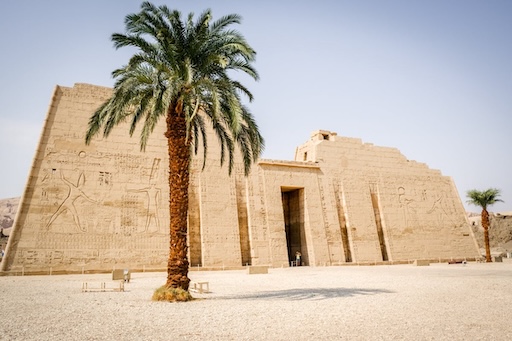
Step aside, tourist-packed temples—Medinet Habu is where history whispers loudest in the silence. Tucked away on the west bank of Luxor, this sprawling complex is the mortuary temple of Ramses III, and it might just be Egypt’s most underrated marvel. If you’re into ancient graffiti, epic battles, or walls that still wear their original color, this place is your new obsession.
Built Like a Fortress, Decorated Like a Palace
The temple looks more like a citadel than a house of worship—and that’s no accident. Ramses III built Medinet Habu not just as a temple to the gods, but also as a statement of power and security. Towering mudbrick walls once surrounded the complex, protecting it from invaders, tomb robbers, and time itself.
Inside, the temple unfolds in grand procession: massive pylons, open courtyards, hypostyle halls, and sanctuaries. The architectural style borrows heavily from the famous Ramesseum, but Medinet Habu is far better preserved. In fact, it’s one of the few places where you can still see brilliant paint clinging to carvings made over 3,000 years ago.
War in Stone
The temple's walls are a massive ancient comic book chronicling the reign of Ramses III. The most famous scenes? His victories over the "Sea Peoples"—a mysterious confederation of raiders who threatened Egypt’s very existence during the late Bronze Age.
In these carvings, Ramses appears larger than life, smiting enemies, charging chariots, and offering captives to the gods. There are even tally marks of severed hands and genitals to count the defeated. Subtle? Nope. But powerful? Absolutely.
Not Just for War
Despite its military edge, Medinet Habu also honors the gods. The inner sanctums are dedicated to Amun, and rituals took place here for centuries. The temple complex also contains chapels for divine wives of Amun and sacred storehouses.
Plus, tucked behind its grandeur is the Temple of Ay and Horemheb—two pharaohs from earlier times whose modest structure got swallowed by Ramses’ ambitions. It's a quiet corner that whispers of forgotten kings.
Home to Ancient Squatters
Here’s a twist: in later centuries, Medinet Habu became a town. Locals moved into the temple ruins and built homes within its walls. Some rooms still show traces of Christian symbols, Arabic graffiti, and makeshift hearths. So you’re not just walking through Egyptian history—you’re stepping over layers of human memory.
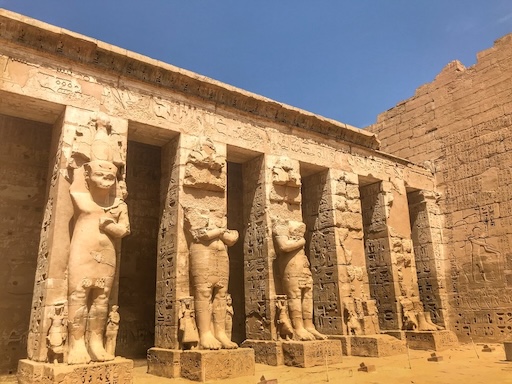
Visiting Medinet Habu
While tourists swarm to Karnak and Luxor Temple, Medinet Habu is often blissfully quiet. That means more time to marvel, more moments of silence, and fewer selfie sticks.
It’s best explored in the early morning, when the light brings the carvings to life. Take your time in the First Courtyard—those painted capitals are showstoppers. Bring a zoom lens to capture the battle reliefs and inscriptions, and don’t skip the back chambers. That’s where the color really pops.
Tips for Travelers
- Hire a guide. The carvings are dense with detail—having someone decode them adds a whole new layer.
- Come early. The temple glows at sunrise and it’s cooler.
- Wear sturdy shoes. The ground can be uneven.
- Bring a flashlight. Some inner rooms are dark but filled with treasures.
- Pair it with the Valley of the Queens. They're just a short drive apart.
The Underrated Wonder
Medinet Habu may not have the fame of Karnak, but it offers something more precious: intimacy. It feels less like a museum and more like a time machine. The scale is human. The stories are raw. And the silence? It speaks volumes.
In the land of colossal statues and crowded tombs, Medinet Habu stands as a sanctuary of power, resilience, and forgotten brilliance.
So go ahead—walk its halls, trace the painted hieroglyphs, and let Ramses III whisper his legacy into your ear. He built this fortress to last forever. Lucky for us, it almost has.
Share this story and inspire others.
Tags: Medinet Habu, Ramses III, mortuary temple, Luxor West Bank, Sea Peoples, ancient Egypt, Egyptian temples, New Kingdom, battle reliefs, hieroglyphs, Amun temple, Theban necropolis, painted carvings, Egyptian history, travel Egypt, archaeological sites, temple architecture, ancient ruins, cultural heritage, off the beaten path Egypt
 Dendera Temple Complex: Where Stars, Myths, and Stone Align
Dendera Temple Complex: Where Stars, Myths, and Stone Align
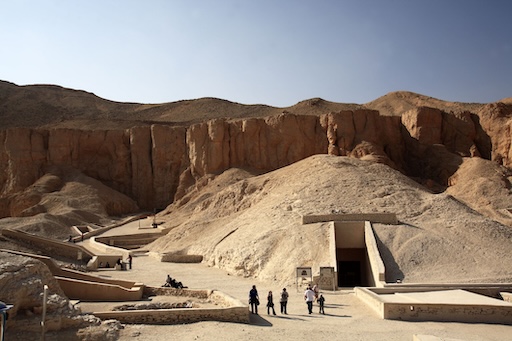 Valley of the Kings: The Eternal Resting Place of Pharaohs
Valley of the Kings: The Eternal Resting Place of Pharaohs
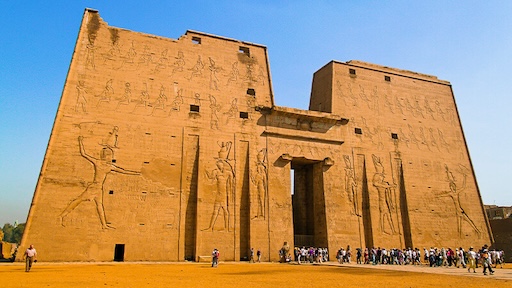 Temple of Edfu – Where Horus Stands Tall
Temple of Edfu – Where Horus Stands Tall
 Abu Simbel Temples: Monuments That Moved Mountains
Abu Simbel Temples: Monuments That Moved Mountains
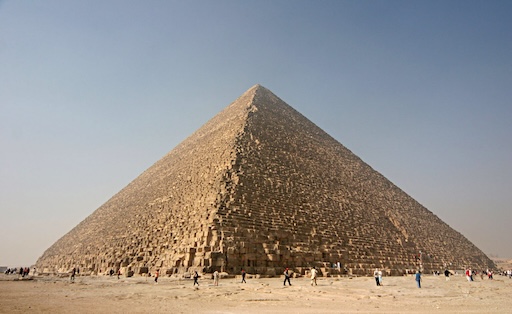 The Great Pyramids of Giza: Alien Relics or Eternal Engineering?
The Great Pyramids of Giza: Alien Relics or Eternal Engineering?
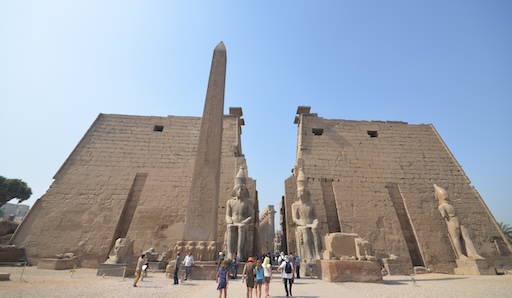 Luxor Temple: A Stage for Gods and Kings
Luxor Temple: A Stage for Gods and Kings
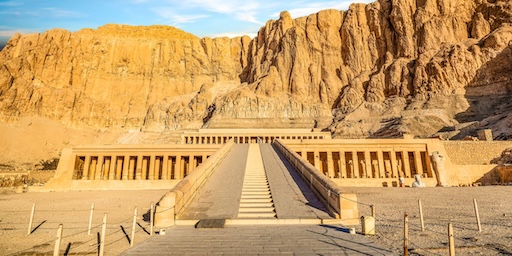 Temple of Hatshepsut: Egypt’s Queen of Stone
Temple of Hatshepsut: Egypt’s Queen of Stone